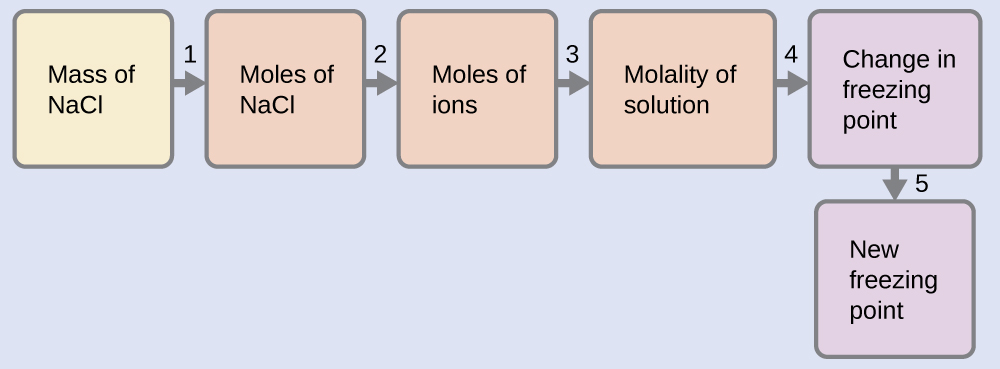| << Chapter < Page | Chapter >> Page > |

−0.208 °C
Assuming complete dissociation, a 1.0 m aqueous solution of NaCl contains 1.0 mole of ions (1.0 mol Na + and 1.0 mol Cl − ) per each kilogram of water, and its freezing point depression is expected to be
When this solution is actually prepared and its freezing point depression measured, however, a value of 3.4 °C is obtained. Similar discrepancies are observed for other ionic compounds, and the differences between the measured and expected colligative property values typically become more significant as solute concentrations increase. These observations suggest that the ions of sodium chloride (and other strong electrolytes) are not completely dissociated in solution.
To account for this and avoid the errors accompanying the assumption of total dissociation, an experimentally measured parameter named in honor of Nobel Prize-winning German chemist Jacobus Henricus van’t Hoff is used. The van’t Hoff factor ( i ) is defined as the ratio of solute particles in solution to the number of formula units dissolved:
Values for measured van’t Hoff factors for several solutes, along with predicted values assuming complete dissociation, are shown in [link] .
| Expected and Observed van’t Hoff Factors for Several 0.050 m Aqueous Electrolyte Solutions | |||
|---|---|---|---|
| Electrolyte | Particles in Solution | i (Predicted) | i (Measured) |
| HCl | H + , Cl − | 2 | 1.9 |
| NaCl | Na + , Cl − | 2 | 1.9 |
| MgSO 4 | Mg 2+ , | 2 | 1.3 |
| MgCl 2 | Mg 2+ , 2Cl − | 3 | 2.7 |
| FeCl 3 | Fe 3+ , 3Cl − | 4 | 3.4 |
| glucose A nonelectrolyte shown for comparison. | C 12 H 22 O 11 | 1 | 1.0 |

Notification Switch
Would you like to follow the 'Chemistry' conversation and receive update notifications?